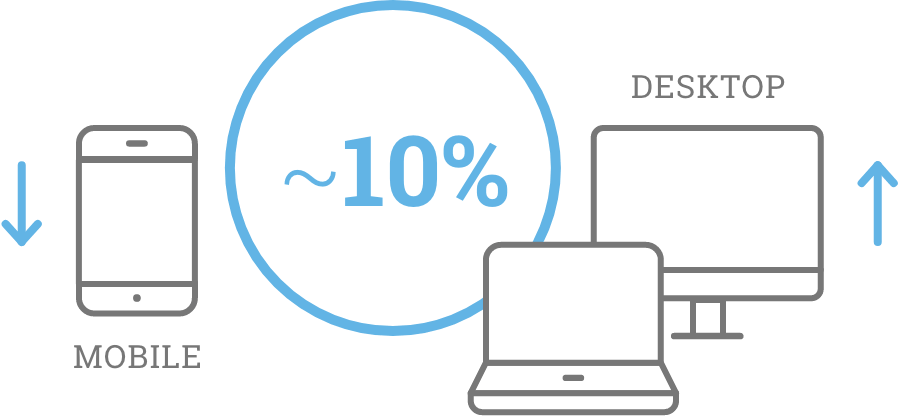Step 1. Manage Your Messaging
For marketing leaders, the ongoing Coronavirus crisis is the elephant in the room. Should you address it and run the risk of frightening your audience away? Or is it better to ignore the issue and leave prospective customers wondering why you won’t address the issue everyone is talking about.
And while how our world will change after this pandemic remains to be seen, there are steps that should be taken now with your digital presence. These measures can communicate to your audience that you are engaged with reality of the current landscape and, in the process, can strengthen your business in preparation for what lies ahead.
Digital design has always placed a premium on clarity and consistency. The rules during a pandemic are no different. Across your website, calls to action should remain prominent with a clear focus on the immediate benefits, and users should have no question about what response they will receive in return.
- Don’t Stray From Your Identity
When addressing how the climate has changed with the current crisis, B2B businesses should tailor their marketing communications to reflect new sensitivities in their audience. This is not to say that if your organization has an established, bold voice that this is the time to pivot toward a dry, more academic tone. This climate doesn’t require a sudden transition into a new identity for your brand.
However, care should be taken with all of your messaging to avoid sounding tone deaf. Businesses who join the many who have offered pandemic-themed promotions or special discounts risk appearing opportunistic, and this will undercut any short-term efforts to increase sales.
- Prioritize Digital Content Creation
Focus your efforts on developing content for your website audience that encourages trust and greater credibility by reflecting the current landscape. B2B technical services that previously relied upon in-person product demos and tradeshows should transition toward providing virtual experiences that can be available on demand for prospective clients through your website.
Video content, which has always performed well with user engagement and SEO, should be viewed as an increased priority in your digital marketing. Presentations that may have been planned for recently canceled events can be repurposed into virtual experiences for your website users and social media channels.
- Capitalize on Past Content Successes
Live events such as webinars may not be feasible for all organizations, but there may be material in your digital archives that’s ripe for a renewal. If your business hasn’t recently performed a content audit, now is an ideal time to look back for opportunities to repurpose features that have previously drawn high engagement numbers. With a little refreshing, these evergreen articles can find new audience for your business.
Step 2. Focus on Website Technology & Performance
With the majority of the country still under orders to stay at home, the digital audience has both expanded and shifted. Maintaining a close eye on the performance of your website may not be a new priority for B2B marketers, but it’s worth considering how coronavirus has altered user habits.

- Desktop is Just as Important as Mobile
While the pandemic has caused a surge in digital engagement, the biggest change has been on the desktop with a roughly ~10% increase in consumption of B2B websites based on analytics across our customers. At the same time, those websites are seeing an approximate ~10% decrease in mobile traffic.
These figures reflect the many people now working from home and no longer on the go when browsing the Internet. This shift shouldn’t encourage businesses to step backward and disregard the mobile audience in their digital marketing, but now is the time to ensure the desktop experience is every bit as strong.

- Time for Digital Spring Cleaning & Performance Testing
Even if you’re not expecting a spike in site traffic, now is the time to ensure your digital home is in order. It’s a smart idea to perform testing to examine and repair any security vulnerabilities as well as conducting speed testing and load testing to ensure your site is running smoothly. These details, which are often put off or forgotten under normal circumstances, are crucial now.
Similarly, this is also an ideal time to evaluate site analytics to ensure the most important user behaviors for your business are being monitored. If you have installed other marketing software on your site to automate or otherwise streamline workflow, this is also an opportunity to evaluate each for return on investment and clean up as necessary.
Step 3. Focus on Enhancing the User Experience & Effective Website Navigation
With increased digital traffic comes a greater need to ensure your prospective customers are learning the most about you and your services as possible. For example, your site search function should provide autosuggestions to increase efficiency, and search queries should be tested to ensure results are accurate, relevant, and useful.
- UX Design for a Changed Environment
Each B2B website should ensure its most time-sensitive and valuable information connected to the pandemic is easy for users to find. Banners and other violator UX design patterns to disrupt the user’s eye flow are key ways to ensure your audience catches important messages about service interruptions, policy changes or other updates tied to the crisis.
Additionally, search and navigation across your site should be audited to ensure they are intuitive and effective with a visual hierarchy on key pages. Avoiding simplistic dropdown menus, vague links, and inconvenient gated assets are just a few ways to ensure your site is helping transform visitors into viable leads.
- Make it Easy to Start a Conversation
A design priority for every B2B website is to view every visitor as a prospective client. Your users should be able to start a conversation with your organization along every step of their journey.
Contact information pages and CTAs should be analyzed and optimized to ensure the process is clear and effective. Though the pandemic has kept much of the world apart, your website remains a vital tool for ensuring you stay connected.






